With decades spent as an entomologist, I've gained a profound appreciation for the complex challenges mosquitoes present to human environments. Just as other pests such as silverfish, ants, bees, cockroaches, spiders, crickets and pincher bugs, these insects not only disrupt our outdoor activities but also pose significant health threats by acting as vectors for diseases.
Among them, the notorious Aedes species has emerged as a potent carrier of illnesses. As we strive to safeguard our communities from these disease-spreading agents, a revolutionary solution has emerged to give us hope – the In2Care Mosquito Station. Let's embark on a journey through the realm of mosquito control and uncover how this amazing and ingenious tool is revolutionizing our approach to mosquito management
The Dual Threat of Aedes and Culex Mosquitoes
Mosquitoes have earned a reputation as some of the most resilient and adaptable creatures on our planet. There are many species, however, the Aedes and Culex mosquitoes stand out due to their prevalence and health implications. While the Aedes mosquitoes are infamous for their role in transmitting diseases like Dengue, Chikungunya, Zika virus, and Yellow Fever, the Culex mosquitoes are no less concerning. They are known carriers of West Nile Virus and pose a significant threat to human health. The battle against these relentless insects and the illnesses they carry demands innovative strategies that address the unique challenges they pose.
Navigating the Complex Aedes Challenge
At the heart of our mosquito control efforts lies a fundamental challenge posed by Aedes mosquitoes – their distinct breeding behavior. Unlike their counterparts (Culex) that often favor larger water bodies for breeding, Aedes mosquitoes exhibit a peculiar preference for laying their eggs in small, inconspicuous containers. These could range from flower pots to discarded items like tires and bottle caps, creating breeding sites that are difficult to identify and manage. This distinctive behavior significantly lessens the effectiveness of conventional mosquito control methods, demanding a novel approach tailored specifically to combat the Aedes menace.
Introducing the In2Care Mosquito Station
The In2Care Mosquito Trap stands as a beacon of hope in the realm of mosquito control, offering a targeted and environmentally-friendly solution to combat Culex and Aedes mosquitoes. Designed and registered for professional use only, this advanced device is not available for retail purchase, underlining its specialized nature. The brilliance of the In2Care Mosquito trap lies in its multifaceted approach, where it attracts, contaminates and disseminates to effectively reduce mosquito populations. Let’s dive a little more on what this means.
How Does It Work?
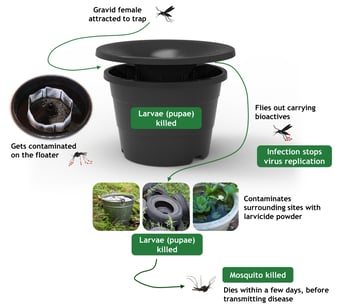 At the heart of the In2Care Mosquito Station lies a mechanism that harnesses the mosquitoes' behavior to tackle them effectively. The station employs a combination of attractants, biological agents, and smart design to lure, infect, and eliminate Culex and Aedes mosquitoes and their larvae. Let's break down the process step by step:
At the heart of the In2Care Mosquito Station lies a mechanism that harnesses the mosquitoes' behavior to tackle them effectively. The station employs a combination of attractants, biological agents, and smart design to lure, infect, and eliminate Culex and Aedes mosquitoes and their larvae. Let's break down the process step by step:
- Attraction: The In2Care trap lures female Culex and Aedes mosquitoes by employing yeast tablets that emit an organic smell mimicking the conditions of potential breeding sites.
- Contamination: When a female mosquito enters the station, it comes into contact with powdered gauze treated with a potent larvicide and a biological fungus. The mosquito becomes contaminated with these agents while trying to land on the gauze.
- Dissemination: After leaving the station, the contaminated mosquito continues its normal behavior, seeking out additional breeding sites to lay eggs. In the process, the female mosquito inadvertently spreads the larvicide and fungus to these new sites.
- Impact: The larvae in the newly infected breeding sites are immediately exposed to the larvicide and fungus, disrupting their development and ultimately leading to the reduction of the mosquito population.
- Extended Reach: Even though one In2Care trap can cover 400m2, the reach of a single trap extends beyond the device itself. Having in mind these insects can travel up to 3 miles, infected mosquitoes contribute to the contamination of multiple breeding sites, effectively turning them into traps for future generations of mosquitoes.
Proven Efficacy and Field Validations
You are probably thinking now whether this is too good to be true. To dissipate your doubts, I can confidently tell you that the In2Care Mosquito Station has been subject to rigorous scientific validation and field trials. Scientific studies conducted by reputable institutions such as the IVCD of the Trinidad Ministry of Health and the Manatee County Mosquito Abatement District in Florida have demonstrated the effectiveness of this technology. These trials have not only proven the station's ability to target Culex and Aedes mosquitoes but have also highlighted its environmentally-friendly nature.
Tailored Strategies for Success
While the In2Care Mosquito Station serves as a cornerstone of effective Aedes mosquito control, its application is most impactful when integrated into a comprehensive strategy. Entomologists and pest control professionals like me recommend the following steps for optimal results:
- Strategic Placement: Deploy the In2Care Stations in shaded and vegetated areas that are likely breeding sites for Culex and Aedes mosquitoes. This strategic placement maximizes the potential for mosquito contact and contamination.
- Barrier Treatments: If you are having trouble with mosquitoes entering from neighboring yards, complement the In2Care Stations with initial barrier treatments using approved non-repellent adulticides.
- Consistent Servicing: Make sure that you have your residential pest control professional service your In2Care Mosquito trap regularly. This should happen at least every 4 weeks to ensure the continued effectiveness of the devices and maintain a strong presence of the contaminating agents.
- Community Collaboration: Effective mosquito control is a collective effort. Homeowners, homeowner associations, and pest control professionals can collaborate to create a unified approach to reduce mosquito populations.
The Path Forward: From Challenges to Solutions
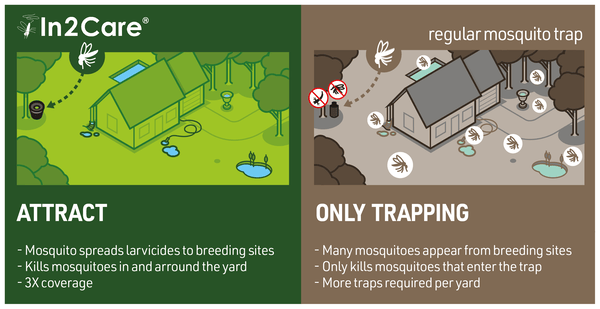 As AIPM stands at the intersection of entomology, public health, and technological advancement, we see the path forward in the realm of mosquito control much more clearly. The In2Care Mosquito trap doesn't merely represent a standalone solution; it represents a giant leap and shift in how we have approached the complex challenge of mosquito-borne diseases over the last decades.
As AIPM stands at the intersection of entomology, public health, and technological advancement, we see the path forward in the realm of mosquito control much more clearly. The In2Care Mosquito trap doesn't merely represent a standalone solution; it represents a giant leap and shift in how we have approached the complex challenge of mosquito-borne diseases over the last decades.
One of the noteworthy features of the In2Care Station is its adaptability to the diverse environments where mosquitoes thrive. Whether in urban landscapes, suburban neighborhoods, or rural communities, this device can be strategically placed to target high-risk areas. The ability to customize its deployment enhances its effectiveness, ensuring that the device aligns with the specific dynamics of each location.
Additionally, as we continue with our effort to provide green options to our customers, we are happy and proud that the In2Care Mosquito trap embraces an environmentally conscious approach to mosquito control. By utilizing safe ingredients that are biologically targeted, the station minimizes collateral damage to non-target organisms, such as beneficial insects. This focus on precision and minimal ecological disruption underscores a responsible and sustainable approach to pest management.
At AIPM it is also important to empower our communities to recognize and report potential breeding sites. By creating a collective effort that extends beyond the confines of the device itself, we can amplify its effectiveness and create a ripple effect of reduced mosquito populations and decreased disease transmission.
Conclusion: For a Healthier Tomorrow
The battle between humans, mosquitoes and diseases has been going on for centuries. It is here where the In2Care Mosquito trap emerges as a transformative partner. This innovative solution bridges the gap between scientific research and on-the-ground action, offering a beacon of hope in our ongoing battle against mosquito-borne diseases.
As an entomologist, I find solace in witnessing the convergence of cutting-edge technology, ecological mindfulness, and community collaboration. The In2Care Mosquito Station stands as a testament to human ingenuity and determination in the face of persistent challenges. Together, we have and sustain healthier and safer living environments, where the hum of mosquitoes no longer carries the ominous shadow of disease.

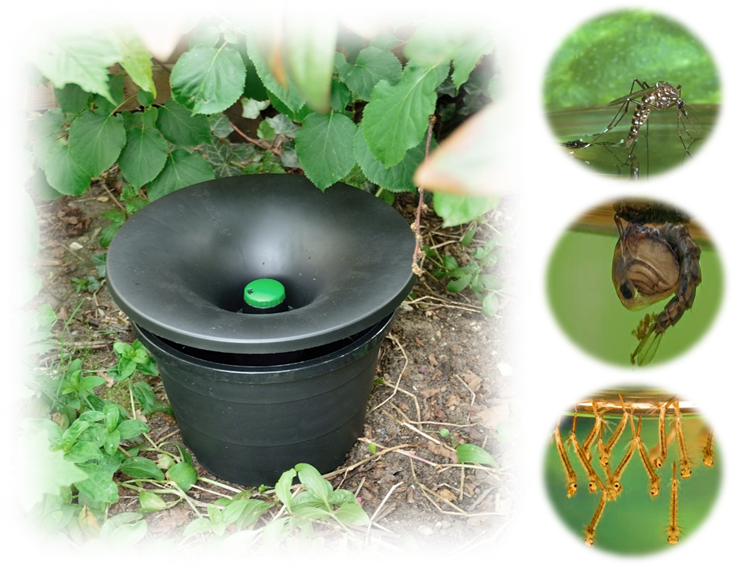
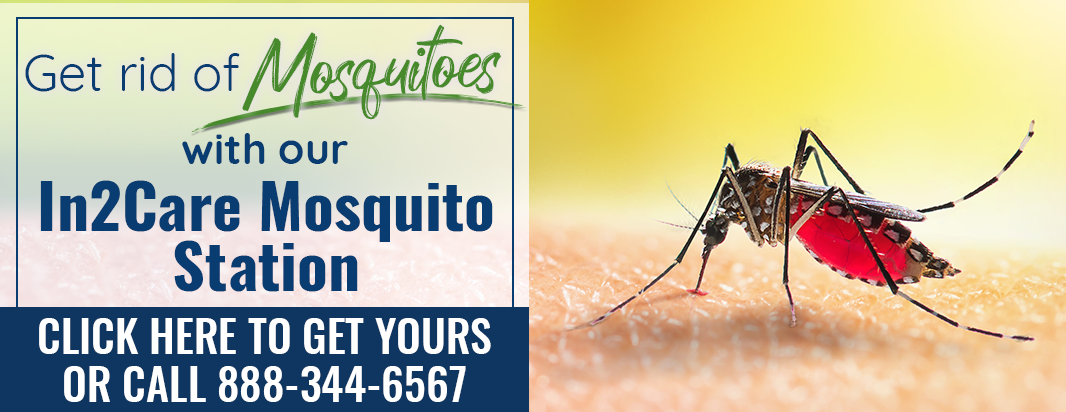

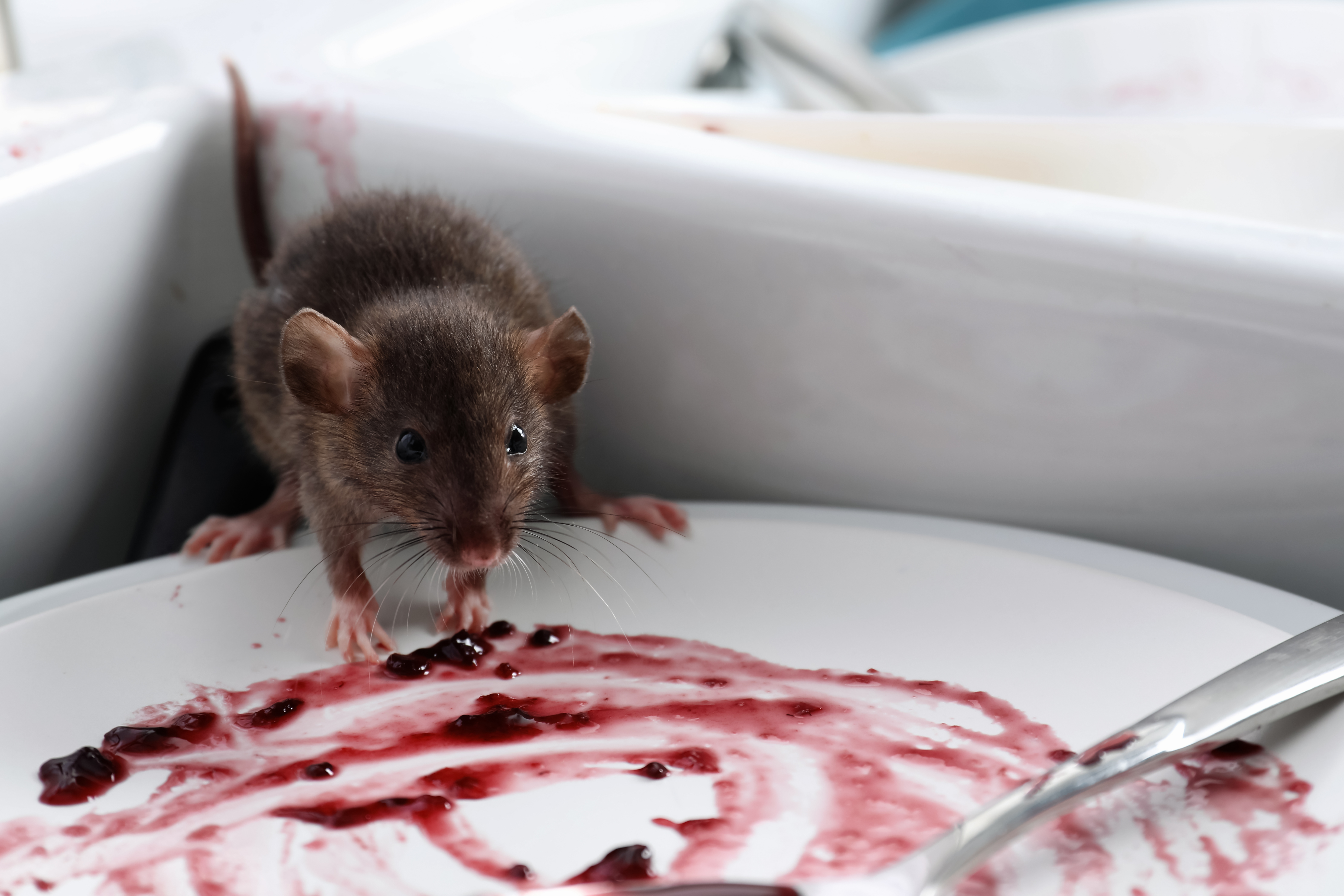
.webp)



Submit a Comment